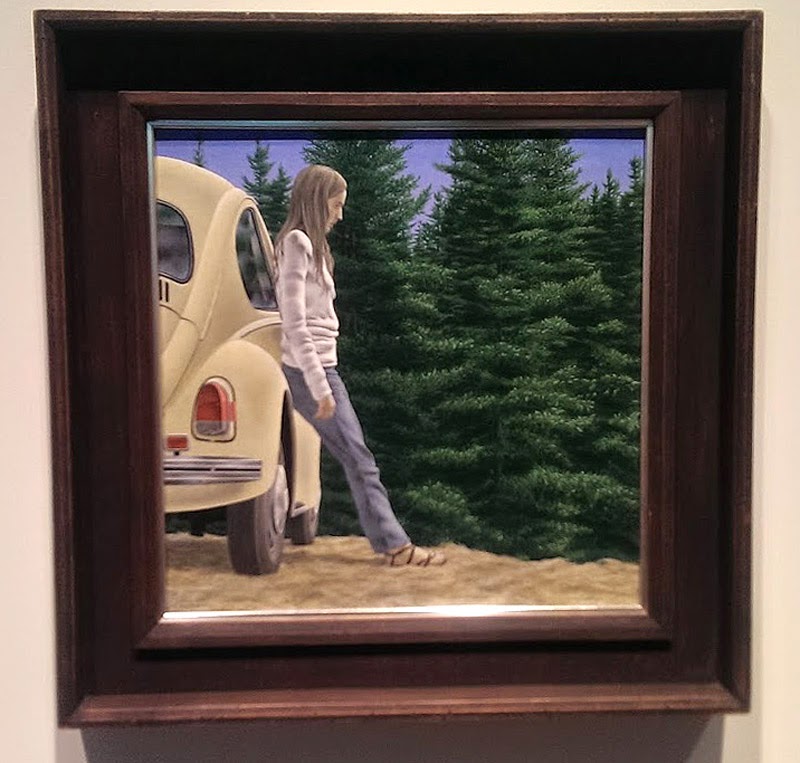I LOST MY NASCAR VIRGINITY IN JUST ABOUT THE BIGGEST WAY POSSIBLE. I have always wanted to see a NASCAR race, and while a few events on the Sprint Cup calendar are within driving distance of Toronto, I knew that thanks to liquor laws in most of Canada, I'd hold my breath forever if I wanted to see a race on this side of the border.
I'd furtively plotted out potential NASCAR day trips to Michigan or Watkins Glen, or a pilgrimage to Indianapolis, but at the end of this spring my wildest dreams were surpassed when a travel gig started coming together that would put me in the infield at Alabama's Talladega Superspeedway for a whole race weekend.
The first thing that struck me about Talladega was the scale, with the infield seeming to stretch out forever, with paddocks and garages, support buildings, a whole road course and several RV campgrounds contained within the tri-oval. After the scale, it's the precision and organization that blew my mind, especially when I came across the parking lot for the transporters, with its long line of identical blue Peterbilts.
I was given a pass that was virtually all access, so I could wander the place at will, from the hardcore partiers on Talladega Boulevard to Pit Road. The U.S. elections were halfway throug their final bitter month when I arrived, and it wasn't surprising that NASCAR isn't exactly a hotbed of Hillary supporters.
My biggest thrill was hearing that Bobby and Donnie Allison were the honorary grand marshall and starter of the race. These were, of course, the men that tussled with Cale Yarborough at the end of the legendary 1979 Daytona 500 that was probably the genesis of NASCAR's wild explosion in popularity, so I had to hurry away fromthe driver's meeting before the race on Sunday to shoot them signing books, hats, t-shirts and die-cast cars for fans.
The most striking moment was the calm before the big race, where fans, crew, drivers and their families all mingled on Pit Road, and where you can see something like a willowy driver's wife in a flowing dress playing with her son on the grass between the pits and the start/finish straight.
Wheel and jack men stretched and did calisthenics while the giants who hefted the fuel bowsers basked like mighty beasts before a stampede. Drivers looked as tense as you'd expect them too, conferring with crew chiefs and engineers in little pockets of logo-covered uniforms.
The big revelation was how hard it is to shoot a NASCAR race. Towers for photographers are helpfully provided near the corners of the track, but photo holes were difficult to find, and the holy grail shot I wanted - a pack of cars hugging the steep banking, compressed into one tight composition by a telephoto lens - seemed impossible to shoot. It was easy to understand when I studied the fencing alongside the track, and realized how heavy these cars are, and the force at which they'd hit the walls in a big crash. I felt spoiled by shooting street courses, though.
The race was completely different in the stands, where the cars roared past on the long front straight just feet away from the crowd. My backup shot - a decent shot of a pit stop - was much easier to get, especially when a couple of cars had wrecked and their crews quickly packed up and left their pit boxes empty for anyone with a hot pass to stand in for the rest of the race.
Joey Logano ended up winning the race, which almost ended under a safety car, and was criticized by some grumbling about the "take it easy" strategy of the Joe Gibbs team, who ran in a little pack just behind the rest of the cars for most of the day. It was frankly almost impossible to follow as I trekked from the infield to the stands and back to the pits under the bright sun all afternoon, but despite the blur of sensations, I can say that I popped my NASCAR cherry in style.





















































